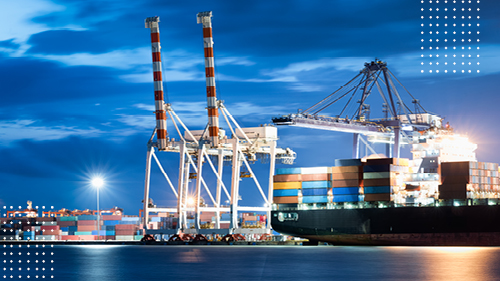Compliance Circular May 2019
05/15/2019

The Ocean Shipping Reform Act of 1998, which amended the Shipping Act of 1984, went into effect on May 1, 1999. This shipping act combined non-vessel operating common carriers (NVOCC) and ocean freight forwarders under one category labeled “ocean transportation intermediary” (OTI). An intermediary is defined as “a person who acts as a link between people in order to try to bring about an agreement.”
In honor of the 20th anniversary of the Ocean Shipping Reform Act of 1998, below is a brief review of OTIs.
What are the functions of an OTI?
The primary function of an OTI is to act as a liaison between the Master Ocean carrier and the shipper. However, each of the OTIs have a slightly different function.
Ocean Freight Forwarder (OFF)
An ocean freight forwarder is an individual or a company located in the United States that arranges space for shipments on behalf of shippers with common carriers, dispatches those shipments and processes documentation or related activities on behalf of the shipper.
Common carriers are any person or business that holds itself out to the general public to provide transportation by water of passengers or cargo between the United States and a foreign country for compensation.
An ocean freight forwarder can make a booking with the ocean carriers by being a shipper signatory to the contacts with the carriers, but an OFF does not issue its own house bills of lading.
Non-Vessel Operating Common Carrier (NVOCC)
The NVOCC is recognized as a common carrier and is licensed by the Federal Maritime Commission (FMC) to be able to provide ocean transportation, including issuing its own house bills of lading or equivalent documents. The NVOCC:
- Does not operate the vessels – the master ocean carriers do.
- Purchases transportation services from a Vessel Operating Common Carrier (VOCC) and offers those services for resale.
- Arranges multimodal transportation, including inland transportation as well as leasing containers and entering into agreement with origin or destination agents.
- Is recognized as the shipper on the master bill of lading and is the one who has the relationship with the ocean carrier.
What do these OTIs have in common?
Both OTIs – the OFF and the U.S.-based NVOCC – are required to be licensed by the FMC. The OTI must submit the required forms and fees to the FMC to obtain the license, providing detailed information about the agency and their qualifying individual.
- The FMC will review the application and contact references as well as investigate the applicant.
- Once the FMC has validated and approved the application, the OFF/NVOCC is required to provide proof of financial responsibility, most likely in the form of a surety bond.
- The FMC will issue an OTI number, which should be posted on the OFF/NVOCC’s website, documentation and rate-related information.
- The NVOCC must publish a rate tariff that is available for the FMC to review at any time with rates that are agreed upon between the NVOCC and the exporter/importer.
Exporters and importers alike, as well as vessel-operating common carriers, should work with reputable NVOCCs that can provide proof of FMC licensure as well as validation of a published tariff.
More information and definitions can be found in the 46 CFR Part 515.
If you have additional questions about the Ocean Shipping Reform Act of 1998 or ocean transportation intermediaries, please contact us or reach out to your Ascent Global Logistics representative directly.